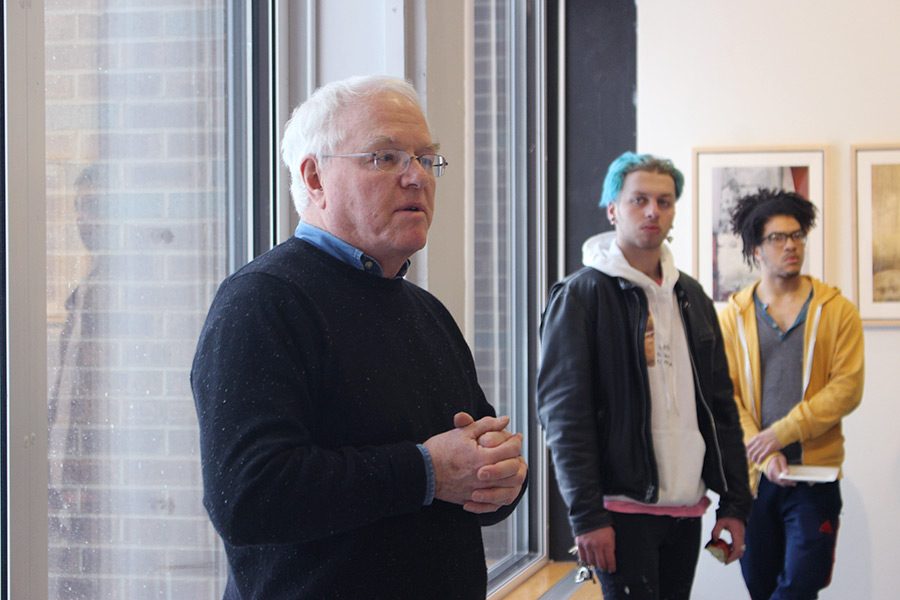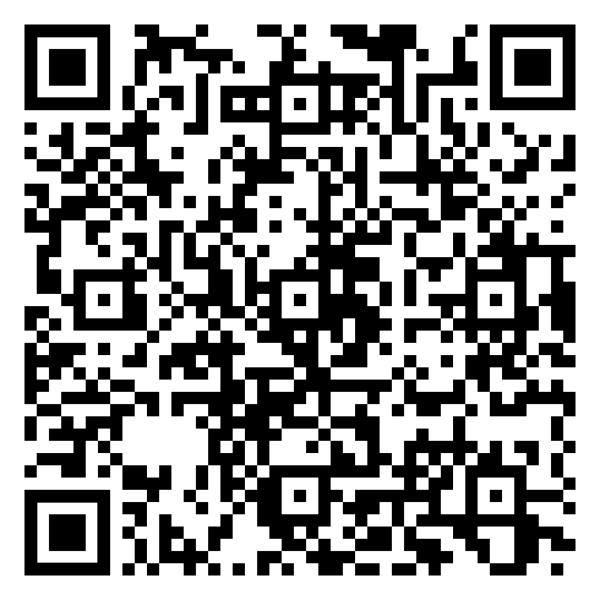Miller unveils a project many years in the making
John Miller presenting “Dialogue with Resonance
On March 15 in the Julian Scott Memorial Gallery at JSC, beloved Professor of Fine Arts John Miller spoke about his gallery exhibition, one that was over 12 years in the making. “Dialogue with Resonance” features Miller’s collages of the various colors, textures and litter of Rome, Italy.
The idea of doing collaged pieces had been rolling around Miller’s head since the early 1980s.
“I put my color slides in these slide sheets and I put them on my light table, and I oriented them in different ways so they really were beautiful, this grouping of 12 or 20 images,” he said. “But those were the days of film. It was too complex to move these ideas into this kind of printmaking.”
Almost two decades later, in 1997, Miller visited Italy with three professors from the Rhode Island School of Design (RISD) and fell in love with Rome.
“It was an extraordinary experience,” he said. “It was the first time I had ever been to Europe and I’ll never forget it.”
Miller has since returned to Italy several times, but it wasn’t until 2006, when he was invited to the American Academy in Rome, that his idea from the 80s began to take form.
Miller’s unconventional subject and structure in “Dialogue with Resonance” can be “blamed,” as he put it, on a well-known celebrity, albeit in a roundabout way. “It comes down to J. Lo,” he said. “2000, at the Grammy Awards, J. Lo arrives in an emerald green, very special gown, and back in the days of yore we guys would have just thought that was really kind of cool.”
So many people had Googled the link to Jennifer Lopez’s Grammy Awards photo that Google Images was born.
Had Google Images never existed, Miller would have never image searched “Rome” prior to his 2006 trip, and he never would have found countless reproductions of the same handful of photographs.
“I realized that, okay, I’m going to Rome, I can’t make one image that looks like those anymore. I can’t go back to my traditional work with single image. I can’t do it,” Miller said. “So I arrived at this beautiful place on one of the hills in Rome at the American Academy, and what am I going to do? I’m surrounded by medieval historians, incredible writers — I mean, a lot of talent under one roof — and here I’m this little hick from northern Vermont and I’ve got to do something here.”
On his first morning at the Academy, Miller broke off from the rest and went into the streets with his tiny Nikon Coolpix digital camera.
“I was walking down the hill in the streets of Rome and just started observing and photographing,” he said. “I remember the first photograph I took was a piece of graffiti on the wall that’s something like ‘Don’t ask, just act,’ so I said, ‘Okay, I was supposed to read that.’ And I just began photographing.”
Miller then noticed how littered the streets of Rome actually were. “There was always trash all over the streets early in the morning because lots of young people living in the streets would just leave this pile of stuff everywhere, and then the trucks run over it,” he said. “So I found lots of these soda cans flattened into all these beautiful objects. I thought, ‘I can’t photograph that stuff. That’s really dumb.’”
However, the graffitied proverb “Don’t ask, just act” reverberated through him and he began shooting.
“I didn’t tell anybody initially what I was doing. I just said, ‘I’m going down and I’m photographing,’” said Miller. It wasn’t until later that the truth came out, after the then-president of the Academy asked Miller why he’d disappear into the streets for hours. “This was sort of a provocative question,” he said, “so I said, ‘Well, I’m photographing trash.’ She was politely silent, and I’m not sure what ran through her mind. But she was courteous and said, ‘That’s wonderful,’ and then she just walked away.”
Miller continued to photograph trash in the mornings and return to the Academy in the afternoons to work with his pieces in Photoshop. All the while he had a specific goal in his mind.
“I made this challenge for myself: Can I create photographs of stuff that would otherwise be banal, ugly, dumb stuff that nobody would look at, and how can I assemble it to make something of beauty?” he said. “Like alchemy, can you turn junk into gold?”
Eventually time ran out on Miller’s 2006 trip and he hadn’t collected all the images he wanted.
He decided to return in 2010 while working on a landscape and agriculture project.
Miller put his street photos on the back burner for quite a while, and they were almost lost forever.
“A few years ago, I realized I have 10 to 12 years of virtual imagery sitting in a computer, and about a year and a half ago I had the hard drive blow out,” he said. “A four-terabyte hard drive, and I think it was all backed up but I can’t even remember, and I realized, ‘Okay, it’s time to start printing. I have to start doing hard copy of this work because if the house burned down I could lose 10 to 15 years of virtual work.’”
Miller began work on “Dialogue with Resonance” last spring and through the summer. He started working with two image combinations and then moved on to horizontal combinations of four.
The organization of the photographs is what makes the pieces stand out.
“If you look at any single actual thing that I photographed, there isn’t a single thing you would have found interesting,” he said. “Nobody would stop to look at this stuff.”
For him, the process is as important as the product.
“You’ll also notice the same image in more than one collage,” said Miller. “There might be three to five variations where I keep the same image, top or bottom, and I throw a different one in to see about the push and pull of whatever dynamic happens between them. I thought it would be fun to put a few of those in here to show that’s just a part of the thought process that goes into making these.”
All of this work accumulated into a wonderful showing, with his colleagues, students, friends and family in attendance.
Miller was in his element, garnering laughs from everyone.
He charmed his audience with his wit and stories and, most of all, with his passion and dedication towards his project.
“Dialogue with Resonance” will be available until April 6.




